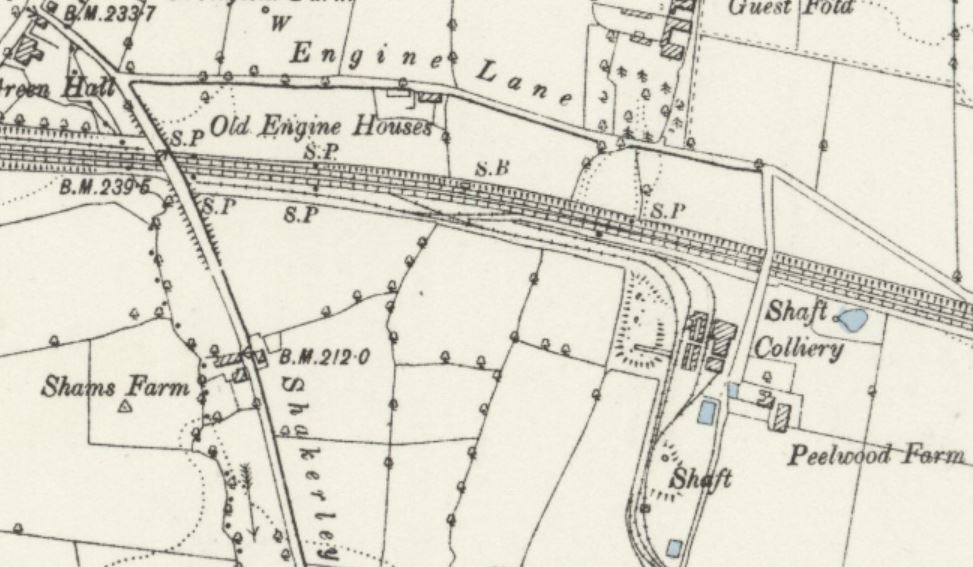

Peelwood Colliery 1894[1]
Reproduced with the permission of the National Library of Scotland
Peelwood Colliery, on the Manchester Coalfield in ShakerleySuburb of Tyldesley in Greater Manchester, anciently a hamlet in the northwest of the township., TyldesleyFormer industrial town in the Metropolitan Borough of Wigan, in Greater Manchester., Lancashire was sunk by the Tyldesley Coal CompanyCoal company was formed in 1870 in Tyldesley on the Manchester Coalfield, in the historic county of Lancashire, England. . Shaft sinking began in 1878 to the east of Shakerley Lane on the south side of the Lancashire and Yorkshire Railway’s Manchester to Wigan line. The colliery started production in 1883.[2]
Tyldesley Colliery Company sank two 13-foot (4.0 m) diameter shafts north of the Wharton Hall Fault to access the Trencherbone mine at 335 yards (306 m) and Black and White mine at 170 yards (155 m). Coal was extracted by room and pillar working in the Black and White mine and longwall mining in the Trencherbone. Coal was wound in single-deck cages carrying two tubs at both shafts.[3]
In 1896 the colliery employed 262 underground and 104 surface workers.[2] By the time the pit closed, coal had been extracted from the Three Feet, Four Feet, Cannel, Plodder, Haigh Yard and Arley mines. In 1923 the colliery had 319 underground and 72 surface workers and produced gas, household and steam coal.[4] The pit closed in 1929.
The colliery was linked to the company’s other pits, CombermereCombermere Colliery was sunk by the Tyldesley Coal Company on the Manchester Coalfield after 1867 in Shakerley, Tyldesley in Lancashire, England. and Cleworth Hall Cleworth Hall Colliery on the Lancashire Coalfield operated between 1880 and 1963 in Tyldesley, Lancashire, England. , by a mineral railway which had exchange sidings with the Tyldesley LooplineRailway line built in 1864 to connect local collieries to the Liverpool–Manchester main line.. After 1888 an exchange siding was constructed next to the Lancashire and Yorkshire Railway’s line from Manchester to Wigan, providing access for the company’s coal traffic.[5]
